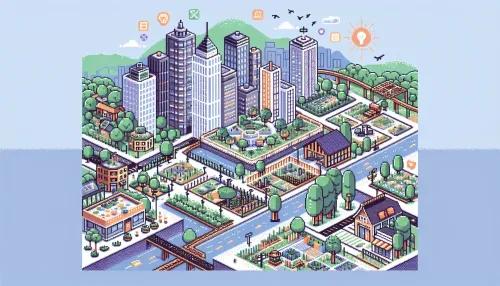
Crafting Inclusive Spaces: Architectural Innovations for Autistic Individuals

Creating environments that account for the unique needs of autistic individuals helps in fostering their well-being and independence. In this context, architectural innovation plays a crucial role. At the HorizonsMind Blog, our mission is to support the autistic community through sharing practical advice and inspirational solutions aimed at embracing neurodiversity.
Sensory-Optimized Design: Building Environments That Support Neurodiversity
For many autistic individuals, processing sensory information can be challenging. Sensory-optimized design offers a powerful approach to reduce overstimulation and create soothing spaces. This involves the careful selection of materials with reduced sensory impact, the use of non-fluorescent lighting to minimize flicker, and incorporation of quiet zones where one can retreat from overwhelming situations. These considerations can be implemented in both private and public spaces, making them more welcoming to individuals with sensory processing difficulties.
Community Planning for Inclusion: Making Public Spaces More Accessible
Inclusive community planning actively considers the needs of autistic residents. From parks with gentle play equipment to libraries with sensory-friendly hours, it's vital to provide access to community resources. HorizonsMind Blog recognizes that these inclusive designs aren't just beneficial for those on the autism spectrum; they create a more robust and compassionate community for everyone. For example, easing navigation through clear visual cues and offering adaptable communal areas ensures all community members regardless of neurological makeup can enjoy public spaces harmoniously.
Acoustic Innovations: Noise-Cancellation Techniques to Aid Sensory Processing
Noise pollution can be particularly disruptive for autistic individuals. Thus, architects and designers are turning towards innovative acoustic solutions like noise-cancelling panels and sound-absorbing materials. Current market trends show increased interest in products that offer acoustic innovations suitable for both education settings and households, adding value for affiliate marketing opportunities focused on enhancing tranquility within lived-in spaces.
Visual Harmony: Color Psychology and Its Impact on Autistic Well-being
Color psychology plays a significant role in creating therapeutic environments. Muted tones and harmonious color palettes can evoke a sense of calm for autistic individuals who may be sensitive to vibrant colors. By incorporating soothing colors into interior designs, spaces become more conducive to relaxation and de-escalation during stressful periods. Sponsors offering paint solutions may find a resonant audience with this content as it aligns with the high search volume topic of "autism-friendly colors."
Adapting Home Environments for Comfort and Functionality
Transforming living spaces to cater to the needs of autistic children is an evergreen topic that continues to engage readers seeking practical solutions. Simple adjustments like creating organized routines visibly laid out in family areas or installing sensory swings can provide comfort and support sensory needs right at home. The implementation of these changes does not have to be expensive or disruptive, making it an ideal niche for promoting affordable DIY products that empower families to make their homes more autism-friendly.
Inclusive Playgrounds: Fostering Social Engagement Through Design
Playgrounds designed with inclusivity can offer wonderful opportunities for autistic children to engage socially while respecting their individual sensory preferences. By integrating interactive elements like tactile play stations or quiet corners into playground designs, children of varying abilities have the chance to interact in ways that feel comfortable and enjoyable to them. Products related to playground equipment with sensory considerations are witnessing a growing demand, making this a valuable segment for marketing-friendly content.
Accessibility Beyond Ramps: Smart Homes for Independent Living
When we think about accessibility, we often picture wheelchair ramps and elevator access. However, accessibility embraces a wider scope, particularly in creating supportive environments for individuals with cognitive differences. Collaborations with technology brands providing smart home systems enable autistic people greater independence through voice-activated controls, automated routines, and sensor-based alerts all aiding in making day-to-day life smoother.
Lighting the Way: Exploring the Effects of Natural Light in Living Spaces
Natural light is not just about brightening up a room it holds therapeutic properties that can greatly benefit autistic individuals. It regulates circadian rhythms, improves mood, and decreases anxiety levels. Architects who incorporate broad windows or skylights contribute significantly towards crafting a conducive setting where natural light plays center stage in wellness-centered design.


